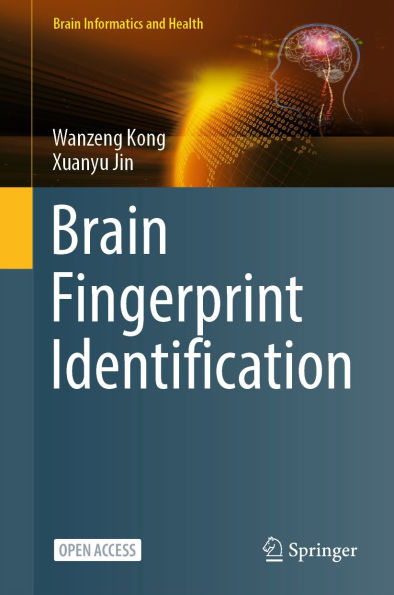This open access book delves into the emerging field of biometric identification using brainwave patterns. Specifically, this book presents recent advances in electroencephalography (EEG)-based biometric recognition to identify unique neural signatures that can be used for secure authentication and identification.
Traditional biometric systems such as fingerprints, iris scans, and face recognition have become integral to security and identification. However, these methods are increasingly vulnerable to spoofing and other forms of attack. Unlike other traditional biometrics, EEG signals are non-invasive, continuous authentication, liveness detection, and resistance to coercion due to the complexity and uniqueness of brain patterns. Therefore, it is particularly suitable for high-security fields such as military and finance, providing a promising alternative for future high-security identification and authentication.
However, most of the existing brain fingerprint identification studies require subjects to perform specific cognitive tasks, which limits the popularization and application of brain fingerprint identification in practical scenarios. Additionally, due to the low signal-to-noise ratio (SNR) and time-varying characteristics of EEG signals, there are distribution differences in EEG data across sessions from several days, leading to stability issues in brain fingerprint features extracted at different sessions. Finally, because the EEG signal is affected by the coupling of multiple factors and the nervous system has continuous spontaneous variability, which makes it difficult for the brain fingerprint identification model to be suitable for the scenarios of unseen sessions and cognitive tasks, and there is the problem of insufficient model generalization. In this book, based on traditional machine learning methods and deep learning methods, the authors will carry out multi-task single-session, single-task multi-session, and multi-task multi-session brain fingerprint identification research respectively for the above problems, to provide an effective solution for the application of brain fingerprint identification in practical scenarios.
This open access book delves into the emerging field of biometric identification using brainwave patterns. Specifically, this book presents recent advances in electroencephalography (EEG)-based biometric recognition to identify unique neural signatures that can be used for secure authentication and identification.
Traditional biometric systems such as fingerprints, iris scans, and face recognition have become integral to security and identification. However, these methods are increasingly vulnerable to spoofing and other forms of attack. Unlike other traditional biometrics, EEG signals are non-invasive, continuous authentication, liveness detection, and resistance to coercion due to the complexity and uniqueness of brain patterns. Therefore, it is particularly suitable for high-security fields such as military and finance, providing a promising alternative for future high-security identification and authentication.
However, most of the existing brain fingerprint identification studies require subjects to perform specific cognitive tasks, which limits the popularization and application of brain fingerprint identification in practical scenarios. Additionally, due to the low signal-to-noise ratio (SNR) and time-varying characteristics of EEG signals, there are distribution differences in EEG data across sessions from several days, leading to stability issues in brain fingerprint features extracted at different sessions. Finally, because the EEG signal is affected by the coupling of multiple factors and the nervous system has continuous spontaneous variability, which makes it difficult for the brain fingerprint identification model to be suitable for the scenarios of unseen sessions and cognitive tasks, and there is the problem of insufficient model generalization. In this book, based on traditional machine learning methods and deep learning methods, the authors will carry out multi-task single-session, single-task multi-session, and multi-task multi-session brain fingerprint identification research respectively for the above problems, to provide an effective solution for the application of brain fingerprint identification in practical scenarios.

Brain Fingerprint Identification

Brain Fingerprint Identification
Related collections and offers

Product Details
| ISBN-13: | 9789819645121 |
|---|---|
| Publisher: | Springer-Verlag New York, LLC |
| Publication date: | 07/05/2025 |
| Series: | Brain Informatics and Health |
| Sold by: | Barnes & Noble |
| Format: | eBook |
| File size: | 33 MB |
| Note: | This product may take a few minutes to download. |
